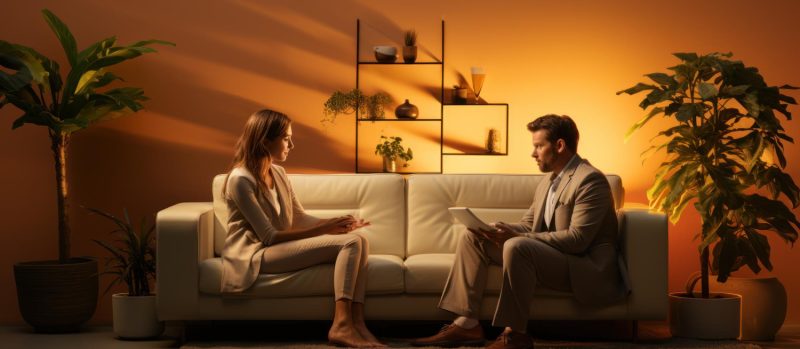The language of interior design is filled with terms that are often used interchangeably, yet they carry distinct meanings that can influence both perception and execution. Among the most misunderstood terms are “modern” and “contemporary” decor.
To the untrained eye, they might appear synonymous, both evoking images of clean lines, uncluttered spaces, and stylish finishes. However, understanding the subtle yet important differences between these two styles can profoundly shape the atmosphere of any living space.
Modern decor refers to a specific historical design movement that emerged in the early to mid-20th century. Rooted in modernism, it emphasizes simplicity, function, and a rejection of unnecessary ornamentation. Contemporary decor, by contrast, is fluid and ever-changing, reflecting the design trends of the current moment. This means that what is considered contemporary today might become outdated tomorrow, while modern style maintains a certain consistency rooted in its historical origins.
Origins and Philosophies: Defining Modern Decor
The birth of modern decor can be traced back to the late 19th and early 20th centuries, a time of rapid industrialization and societal shifts. Influenced by movements such as Bauhaus and Scandinavian design, modern decor emerged as a response to the ornate and overly decorative styles of the Victorian and Art Nouveau eras. Architects and designers of the time, like Ludwig Mies van der Rohe and Le Corbusier, championed the idea that form should follow function.
In modern interiors, every element has a purpose. The focus lies on practicality and minimalism, which translates into the use of natural materials like wood, leather, and stone. Colors tend to be neutral or earth-toned, creating a serene and harmonious environment. Furniture features clean lines and geometric shapes, often elevated on legs to create a sense of openness.
Moreover, modern decor celebrates architectural features rather than hiding them. Exposed beams, large windows, and open floor plans are common, showcasing the structure of the home itself as an aesthetic element. Ornamentation is minimal, and decorations are chosen carefully to avoid visual clutter.
The Evolving Nature of Contemporary Decor
Unlike modern decor, contemporary style is not tied to a specific period. It is inherently dynamic, constantly evolving to reflect the tastes and sensibilities of the present day. What defines contemporary decor in the 2020s might shift dramatically by the 2040s.
Currently, contemporary interiors are characterized by a blend of comfort and sophistication. Soft, curved lines have become more prevalent, replacing the stark angularity that once defined modern spaces. Materials like glass, metal, and natural fibers coexist effortlessly, creating environments that are both inviting and cutting-edge.
Color palettes in contemporary decor often lean towards neutrals, but they are punctuated by bold accent colors that add vibrancy and personality. Unlike modern design, which shies away from ornamentation, contemporary interiors may feature statement pieces, from abstract art to striking lighting fixtures that serve as focal points.
Another hallmark of contemporary decor is its emphasis on sustainability and technology. Eco-friendly materials, energy-efficient lighting, and smart home integrations are becoming increasingly common, reflecting the growing global awareness of environmental issues.
Materials and Textures: Where They Diverge
The choice of materials is one of the clearest indicators of whether a space leans towards modern or contemporary design. Modern decor favors organic, natural elements. Think unpainted wood, linen, leather, and metal in their raw forms. These materials are celebrated for their authenticity and connection to nature.
Contemporary decor, on the other hand, embraces innovation. Alongside traditional materials, you will find concrete, recycled plastics, and mixed media. The tactile experience is equally diverse; smooth, glossy surfaces often contrast with rougher textures, adding depth and interest to the space.
The approach to furniture also reflects this divergence. In modern interiors, furniture pieces often have a handcrafted, almost artisanal quality and are chosen for their timeless appeal. Contemporary furniture, by contrast, is more experimental. Pieces may feature unconventional shapes, modular configurations, and multifunctional designs that cater to the demands of modern living.
Colors and Patterns: Subtle Distinctions
Color plays a crucial role in defining the mood of a space. Modern decor typically adheres to a muted palette dominated by whites, beiges, and browns. Accents, when present, are understated and natural, such as the green of a potted plant or the soft blue of a throw pillow. This restraint reinforces the modernist emphasis on simplicity and order.
Contemporary decor takes a more liberal approach. While neutral tones remain a staple, they are often enlivened by pops of bold colors such as deep blues, emerald greens, and vibrant yellows. Patterns, which are largely absent in modern design, may also make an appearance. Geometric motifs, abstract prints, and artistic wall treatments can all be found in contemporary interiors, adding a layer of visual excitement.
Layout and Spatial Planning
Spatial organization is another area where modern and contemporary styles diverge. Modern interiors are defined by open floor plans that promote flow and functionality. Furniture is arranged to create clear sightlines and facilitate movement, ensuring that each space serves its intended purpose without distraction.
Contemporary layouts are often more flexible. They adapt to the needs of the moment, accommodating everything from remote work setups to casual family gatherings. This adaptability is reflected in the use of modular furniture and movable partitions, which allow residents to customize their environments in real time.
Additionally, contemporary spaces tend to prioritize comfort. Plush seating, layered textiles, and cozy nooks are common, creating environments that feel both stylish and livable. This emphasis on comfort marks a departure from the more rigid and utilitarian ethos of modern design.
Accessories and Personal Touches
When it comes to accessorizing, modern decor advocates for a “less is more” philosophy. Decorative objects are few and carefully curated, with an emphasis on quality over quantity. Items such as minimalist sculptures, mid-century vases, and monochromatic art are common choices.
Contemporary interiors, however, are more eclectic. Personalization is key, and accessories often reflect the homeowner’s tastes, travels, and interests. Artworks can range from classic to avant-garde, and textiles may include global influences or artisanal craftsmanship. This openness allows for greater creative expression, making contemporary spaces uniquely personal.
For those looking for a stylish tray for the coffee table, contemporary design offers countless possibilities. From sleek metal options to handcrafted ceramic pieces, the right tray can seamlessly blend functionality with aesthetic appeal, serving as both a practical accessory and a statement item.
Choosing the Right Style for You
Understanding the difference between modern and contemporary decor is more than an academic exercise; it is essential for creating a home that aligns with your values, lifestyle, and aesthetic preferences. Modern design offers timeless elegance, rooted in historical movements that continue to inspire simplicity and functionality. Contemporary decor, in contrast, embraces the present, offering versatility and reflecting current cultural and technological trends.
Ultimately, the choice between modern and contemporary is not a binary one. Many homes successfully integrate elements of both, resulting in spaces that are both grounded and dynamic. By appreciating the unique qualities of each style, homeowners can make informed decisions that transform their interiors into harmonious and inspiring sanctuaries.






